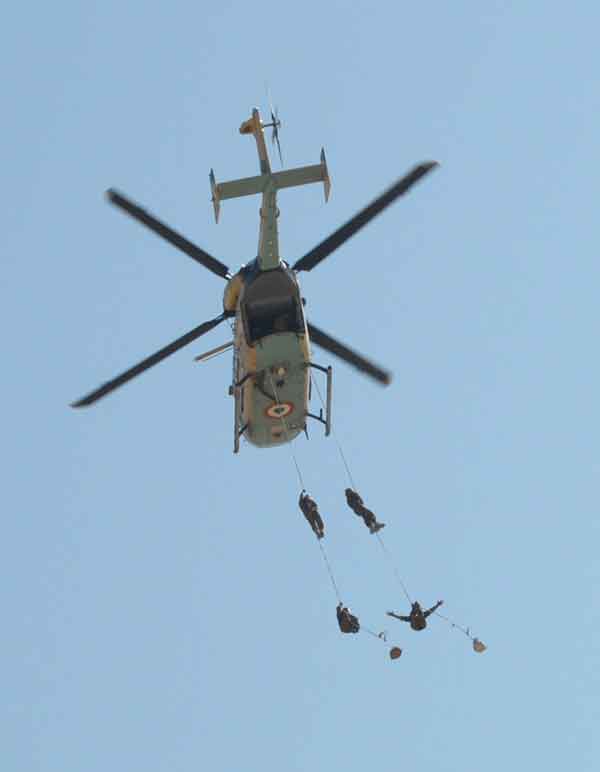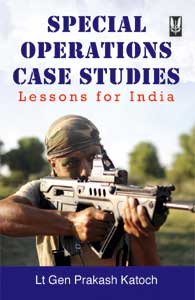
In March 1971, the genocide unleashed in East Pakistan under Pakistani General Tikka Khan, Governor of East Pakistan and commander of the unified Eastern Command, under Operation ‘Searchlight’, included a midnight attack at the University of Dhaka, the arrest of Sheikh Mujibur Rahman of the Awami League, capture of all radio stations, and killing of thousands of Bengalis — intelligentsia, academia and youth.1 Tikka Khan’s atrocities and notoriety earned him the nickname of the “Butcher of Bengal”.2 Operation ‘Searchlight’ precipitated the Pakistani genocide and caused roughly 10 million refugees to flee to India.3 Estimates of the civilians killed in East Pakistan by the Pakistan Army ranged from 300,000 to 3,000,000, while some 200,000 women were raped. Tikka Khan was moved out after a few months, but these systematic killings enraged the Bengalis, who declared independence from Pakistan — to establish the new nation of Bangladesh. It led to the war of liberation by the Mukti Bahini against Pakistani “occupation” forces in Bangladesh. India came to the defence of the Bengali victims of Pakistani genocide in East Pakistan.4 War broke out on December 3, 1971 and Pakistan surrendered in the east 12 days later, with India taking 93,000 Pakistani military soldiers prisoners — the highest number of prisoners of war after the World Wars. Mujibur Rahman became the first Prime Minister of an independent Bangladesh, as East Pakistan was renamed.
The India–Pakistan War in the Western Theatre began when the Pakistan Air Force launched a series of air attacks on Indian airfields at Amritsar, Awantipur, Faridkot, Pathankot and Srinagar on 3 December 1971, at about 1730 hours.5 This was followed by attacks on selected Indian posts on the same night. Pakistan went on the offensive in the West when Indian support to the freedom fighters in East Pakistan was stepped up. This was in line with its strategic thinking that the defence of East Pakistan lay in its Western wing. Both sides launched offensives, but a ceasefire came coinciding with the breakup of Pakistan, with East Pakistan ceasing to exist. The surrender of the entire Pakistani garrison in East Bengal and the gains in the Western Sector made India the clear victor of the war of 1971.
The Pakistanis had initially surprised India in the Rajasthan sector in the 1965 War. On the India side of this desert sector was the 10 PARA Commando nicknamed the ‘Desert Scorpions’ — raised on June 1, 1967, for special operations in desert terrain in the Southern Command Theatre. The battalion was rechristened as the 10 PARA (Special Forces) in the mid-nineties. During the 1971 Indo–Pak War, 10 PARA Commando was tasked to foray deep inside enemy territory and facilitate the capture of several important population centres and locations of military significance in the Sindh province of Pakistan.
Objective
Given the terrain of the Thar desert and lack of mechanization of both the Indian and Pakistani armies in the area, it was believed that both sides would refrain from a major thrust in the sandy terrain. The desert border was manned by a thinly spread Indian Army and state armed police units in isolated posts. Pakistan Army and Pakistan Rangers manned their positions similarly on the other side. However, the Pakistan Army had formed a ‘desert militia’ with the Hurs — a Sufi sect with thousands of adherents in Sindh. The Hurs were known for their bloody insurgency against the British, which resulted in heavy reprisals, including the hanging of the Hurs’ leader, the ‘Pir Pagara’. The Hurs had extensive knowledge of the desert and were known to be fanatical fighters. The Pakistsani generals successfully appealed to the reigning ‘Pir Pagara’ to field this militia. The Hurs were initially used to plug gaps in defence, but the local commanders soon mixed with Pakistani regulars, and began to raid inside Indian Territory. The Indian objective now was to respond Pakistan similarly, albeit in larger measure — strike enemy positions 80 km inside their territory, hit their supply lines and create confusion.
The Force
With the Indo–Pak War erupting on December 3, 1971, a division of the Indian Army was to move towards Umarkot, a city en-route to the metropolis of Hyderabad, Sindh, in Pakistan. A band of commandos from the 10 Para (Commando) was designated the advance element and tasked with raiding deep inside Pakistani territory to eliminate key enemy positions. These commandos had trained intensively for such operations since July. The commando unit was led by Lieutenant Colonel (later Brigadier) Bhawani Singh, Commanding Officer of the Special Forces unit and the Prince of Jaipur. The unit also had Khoja Rajputs, who knew the region well. The force would enter enemy territory without any air or armor support, in specially fitted jeeps and jongas, armed with only light weapons. This model of long-distance raids was practiced by David Stirling, founder of the British Special Air Service (SAS), during the North African campaign of World War II. Indians had also fought in this campaign and were aware of the utility of such a force, though the sandy Thar Desert was far worse than the North African desert.
Execution
The assigned task was challenging and expectations were very high, since the success of subsequent operations by the main thrust in this area heavily depended upon the quality of information passed on by the Battalion, as also on the neutralization of pockets of enemy resistance at the earliest.6 Sans air and artillery support, the commandos did not have tanks or tracked vehicles for cross-country move. Moreover, there were no technological aids back then, such as aerial or satellite photographs or unarmed aircrafts or drones. The commandos were on their own and a lot therefore depended on self-belief, bold execution of plans and the versatility and flexibility of men on the ground. The commandos had been training for such contingencies since the past several months.
10 PARA (Commando) commenced operations on December 5, 1971. Commandos infiltrated in two separate columns, reached their rendezvous at Kita and established a Commando Base six kilometers short of Chachro late at night on December 6, 1971. After a brief confirmatory reconnaissance, ferocious raid was launched at Chachro (Pakistani Rangers base 80 kms inside Pakistan) at 0400 hours on December 7. In a swift and lightning engagement with the well-fortified enemy, Chachro was captured within a few hours.7 This action unhinged the enemy completely. His will to fight was broken and he was made to believe that a much larger force on tanks was rampaging through his territory. Indian Army units soon occupied Chachro in the wake of this raid.
The commandos exploited this state of psychological dislocation of the enemy and proceeded to successfully raid the enemy at Virwah by late night on December 8. Within a few hours, the Tehsil Headquarters of Nagarparkar was also raided. Having successfully completed their tasks, these two small columns returned by December 10. A total of 13 enemy personnel were killed and 17 prisoners-of-war captured, besides a large quantity of arms, ammunition and warlike stores. In subsequent days, 10 PARA (Commando) was re-launched further in the south and once again, delivered disproportionate results against the enemy at Islamkot and Lunio.
During these operations, the speed and ferocity of the attacks forced the enemy to panic and flee despite having superiority in numbers and position. Lt Col Bhawani Singh led the commandos from the front throughout the duration of the war. Logistical difficulties, terrain and the announcement of ceasefire saw the main thrust of the Indian Army halt just short of Umarkot. However, by the end of the war, about 13,000 sq km of Pakistani territory in Sindh was in Indian hands.
More than the material and territorial gains, the biggest achievement of 10 PARA (Commando) was that its surgical and bold actions deep inside enemy territory severely dented the enemy morale, who vacated several positions well in advance. It facilitated early capture of significant real estate by the main forces following in its wake. It was a novel concept of special operations for the Indian Army at that time, executed in an exemplary manner — these special operations becoming a benchmark for such operations in the future.
Analysis
The plan of executing a raid 80 kms deep inside enemy territory was bold. Stealth and speed of the attack on Chachro took the enemy completely by surprise, who didn’t expect such deep raid and had not deployed any early warning elements ahead of its defences. The Rangers Base at Chachro had no inkling of the impending attack. Exploiting the enemy’s psychological dislocation, no time was wasted in raiding Virwah and Nagarparkar in quick succession. Use of specially fitted jeeps/jongas, armed with light weapons was innovative, albeit the only available option. The raids, capture of Chachro in particular, were successful because of simple plans including catering from required firepower, down to the fuel and vehicle loads. The speed and ferocity of the attacks forced the enemy to panic and flee, despite having superiority in numbers and fortified positions. The leadership was dynamic in the commanding officer and all the commandos were fully charged to achieve the laid down aim. Commandos had trained and rehearsed extensively for the task and delivered even though the information of the target was not detailed.
The Chachro raid was the first time such a long distance raid in desert terrain was executed by India, becoming a benchmark for similar operations in the future.
Endnotes
-
Ganguly, Sumit, Conflict Unending: India–Pakistan Tensions Since 1947, Columbia University Press, 2002, pp. 60. ISBN 978-0-231-12369-3.
-
”Gen. Tikka Khan, 87; ‘Butcher of Bengal’ Led Pakistani Army”, Los Angeles Times, March 30,2002, http://articles.latimes.com/2002/mar/30/local/me-passings30.1
-
“Bangladesh sets up war crimes court”, Aljazeera.com, March 25, 2010, https://www.aljazeera.com/news/asia/2010/03/2010325151839747356.html
-
“Gen. Tikka Khan, 87; ‘Butcher of Bengal’ Led Pakistani Army”, Los Angeles Times, March 30,2002, http://articles.latimes.com/2002/mar/30/local/me-passings30.1
-
Dhruv C Katoch, ‘Brief on the Indo–Pak War 1971: Western Theatre’, Centre for Land Warfare Studies, December 17, 2011, http://www.claws.in/743/brief-on-the-indo-pak-war-1971-western-theatre-maj-gen-dhruv-c-katoch.html
-
“The Desert Raids of the 1971 War”, DNA, December 16, 2018, https://www.dnaindia.com/analysis/column-the-desert-raids-of-the-1971-war-2696445
-
Ibid.





